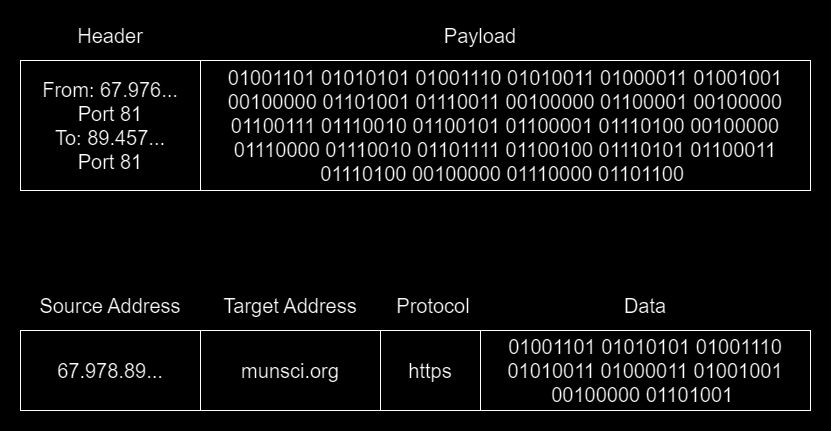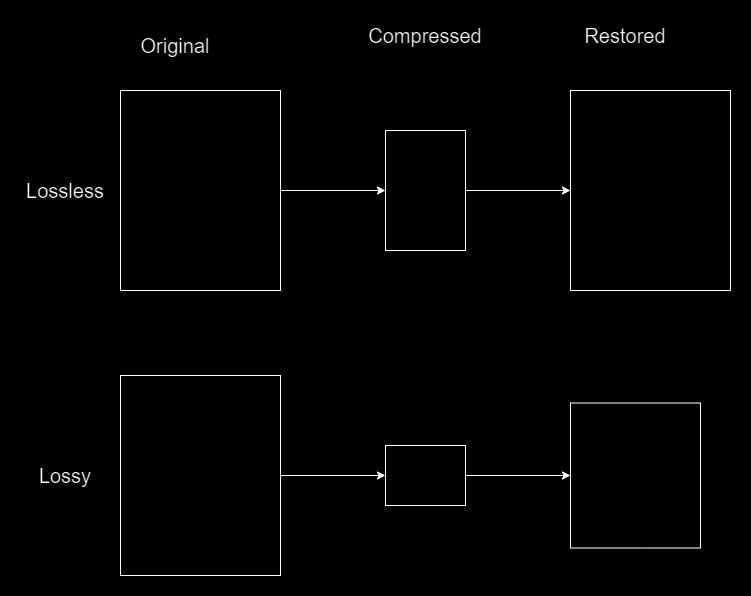Data Transmission
1.3.6 Protocols & Data & Packets
Protocol
A set of rules for data communication over a network
Alternatively, according to my notes:
A protocol is the format and the order of messages exchanged between two or more devices, as well as the actions taken on the transmission and/or receipt of a message.
Data + Packet
Data is anything that a computer could understand, like binary. Data is usually meaningless to us.
A Packet is a small unit of data used in this communication
A simple packet would look like this:

![]()
The bottom example would be a little more detailed for the exam.
1.3.7 The need for protocols
Protocols are a set of rules computers follow when communicating on a network. No information would arrive would these not exist.
They:
-
Ensure data integrity
-
Manage congestion
-
Check for errors
-
Manage flow control
-
Prevent deadlock
Data integrity
The accuracy, consistency and completeness of data sent over a network. When sending data, data integrity must be imposed to prevent any data loss.
Flow control
Controls the rate at which the sender is transmitting, depending on the receiver's capabilities. It prevents sending too much data to a receiver that cannot handle the traffic.
Deadlock
A deadlock is when two nodes or processes try to access the same information from the sender at the same time. A queue must be set in place to allow both processes to access the information one at a time.
Congestion Control
Congestion is a state where so much data is transmitted, the network service quality deteriorates, leading to packet loss and delays.
Error Checking
Error detection/checking detects noise and impairments in the data sent. Parity bits are used at the end of a packet, if the parity bit is received the data is complete, if not there must be some data loss along the way.
1.3.8 Speed of data transmission
Why would the speed of data transmission vary?
| Connection |
If the users' connection is broadband, then the speed will be pretty slow. If you have fibre optic, it'll be a lot faster.
Wireless is less stable than wired, meaning steaming quality could vary. |
| Traffic |
The more traffic, the slower the data transfer. There is a limited amount of free traffic, as soon as that is exceeded, you can run into problems. |
| Time |
Evenings when many people stream or on Weekends, the connection might be slower than at midday. |
| Distance |
The further the data centre, the longer the connection takes. |
| Infrastructure |
If the infrastructure is outdated, it'll be a lot slower. |
| Other |
Environmental, Financial and data type/size |
1.3.9 Compression
Compression is the process of encoding information to use fewer bits than the original file. Think .zip or .7z. The smaller the file, the less time and bandwidth used. Hence, why it's popular when Sharing, Transferring, Backing up or encrypting data.
Lossy vs Lossless
![]()

Lossless, as the name implies, does not lose any data when restoring it. Lossy has the advantage of compressing even smaller, but data goes missing when restoring it.
| Wired |
Wireless |
| Twisted Pair Cable (UTP) |
Radio Wave |
| Coaxial Cable |
Infrared |
| Fibre-optic |
Microwave |
We need to evaluate these types of media against Security, Reliability, Cost and Speed. We will assume no encryption. If encrypted, the security would be better.
| |
UTP |
Wireless |
Fibre |
| Reliability |
Susceptible |
Susceptible |
Brittle |
| Speed |
Medium |
Slow-Medium |
Fast |
| Cost |
Cheap |
Cheap |
Expensive |
| Security |
Low |
Low |
High |
1.3.11 Packet switching
A piece of data might be split into multiple packets. Packet switching is a type of network describing how packets are routed through a network based on the destination address.
As packets can take many different routes over different servers, packet switching describes the network and routes taken.







